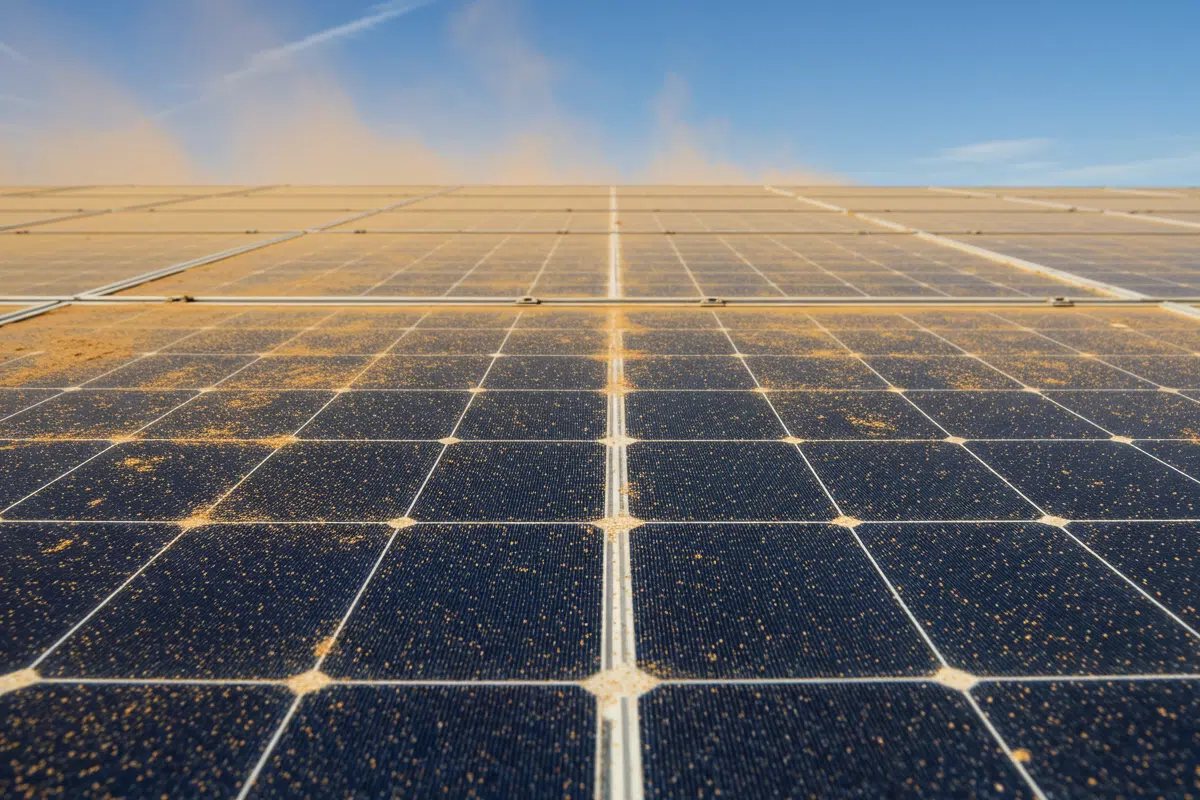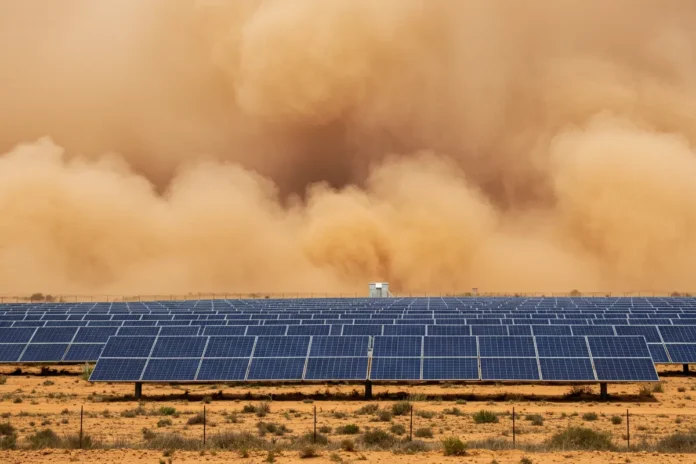In today’s fast‐evolving renewable energy landscape, an unexpected phenomenon is drawing attention from grid operators and solar power experts alike. Fine dust particles, blown from the vast deserts of the Sahara, are increasingly influencing the performance of photovoltaic systems and challenging the stability of Europe’s electric grid. At CommaFast, we delve into how these natural events, while disruptive in the short term, are also prompting innovative solutions for a more resilient energy future.
A Natural Journey with High-Tech Implications
Every so often, powerful meteorological conditions in North Africa trigger immense dust storms. These events lift minuscule particles high into the atmosphere, carrying them across continents until they eventually reach Europe. More frequent in recent years, these airborne grains not only settle on urban surfaces and vehicles but also interact directly with solar installations. A 2022 study published in Nature highlighted that intensified drought episodes contribute to the growing prevalence of these dust events, prompting renewed interest in understanding their far‐reaching impact .
For technology and energy professionals, this isn’t just a matter of aesthetics or air quality. The migration of Sahara dust influences how much sunlight reaches photovoltaic panels, affecting both immediate power generation and long-term performance. The phenomenon has inspired researchers to quantify these impacts by examining nearly 46 separate dust episodes across various European regions between 2019 and 2023. Their findings suggest that even brief encounters with high‐density dust clouds can ripple through the energy supply system in significant ways .

How Dust Impacts Solar Photovoltaic Performance
When sunlight encounters the atmospheric layer saturated with desert dust, two key mechanisms come into play: scattering and absorption. These particles diffuse and partially absorb solar radiation, thereby diminishing the intensity of direct light that reaches solar modules. In addition to the atmospheric effects, dust can also physically settle on the surface of photovoltaic panels, leading to soiling. Over time, this accumulation may not only reduce the panels’ efficiency but also accelerate their degradation.
Consider the following table, which summarises the primary ways Sahara dust interacts with solar energy systems:
| Impact | Mechanism | Long-Term Consequence |
|---|---|---|
| Light Attenuation | Scattering and absorption of sunlight | Reduced solar irradiance and energy yield |
| Panel Soiling | Dust deposition on photovoltaic surfaces | Decreased efficiency and potential material wear |
| Forecast Uncertainty | Inconsistencies in natural light measurements | Challenges in predicting solar power production |
| Cloud Formation | Dust-induced condensation leads to cloud cover | Further reduction in available sunlight |
This concise summary underscores not only the immediate physical interaction but also the broader systemic issues such as forecasting inaccuracies and long-term infrastructure wear .
The Forecasting and Grid Stability Challenge
Accurate forecasting of solar energy production is vital for maintaining balance within the electricity grid. Grid operators rely on production models to adjust supply dynamically—turning on backup generators or redirecting power flows—to match consumer demand. However, the unpredictable emergence of dust clouds can throw off these calculations. When dust events interfere with expected solar irradiance, forecasting models may underestimate or overshoot real production values. This discrepancy endangers grid stability, highlighting the critical need for adaptive forecasting methods that account for meteorological and mineralogical factors .
Industry experts suggest that integrating real-time data about dust concentration and its optical properties into forecasting algorithms could mitigate these risks. The development of such dynamic, data-driven models is an essential part of ensuring that Europe’s ambitious renewable targets are met without compromising the reliability of the power grid.
A Turning Point for Renewable Energy Integration
While the challenges posed by Sahara dust are significant, they also herald a transformative moment for renewable energy strategy. The increasing prevalence of these events has spurred research into more resilient solar technologies and enhanced grid management practices. By acknowledging and adjusting to the intrinsic variability of natural phenomena, energy providers can better prepare for future disruptions.
For the United Kingdom, where the push for electric mobility and sustainable energy solutions is more urgent than ever, these insights serve as a wake-up call. Implementing adaptive forecast tools and robust maintenance protocols for solar installations can ensure that the nation remains at the forefront of clean energy innovation. For further information on adapting energy strategies, check out the International Energy Agency’s latest reports.

Embracing Innovation for a Greener Future
The natural cycle of Sahara dust, though seemingly a minor detail in the grand scheme of weather patterns, is a potent reminder of how environmental factors can dramatically influence modern energy infrastructures. CommaFast believes that by embracing technological innovation and enhancing our predictive capabilities, the challenges of today can pave the way for the energy solutions of tomorrow.
As Europe shifts away from fossil fuels and moves toward a sustainable, solar-dependent future, understanding the interplay between natural phenomena and our energy grids is paramount. Researchers, engineers, and policymakers now face the task of developing resilient systems that not only withstand the vagaries of nature but also harness them to drive progress. This visionary approach is essential for securing a robust, green energy future in a world where every watt counts.
Final Thoughts
Sahara dust is more than just an environmental quirk—it is a catalyst for change in the renewable energy landscape. By transforming potential disruptions into opportunities for technological advancement, Europe is forging a path toward enhanced grid stability and sustainable energy production. Check out additional insights and technical updates on our CommaFast Technology Hub and stay informed about the latest trends in electric mobility and renewable progress.
The dynamic challenges presented by natural dust events remind us that energy systems must be as adaptable and forward-thinking as the technologies that power our future. Every cloud (or dust storm) paves the way for a breakthrough. Embrace the challenge, and together, let’s pave the way towards a brighter, more sustainable energy era.
By exploring these complex issues with clarity and vision, we hope to inspire not only technical and professional audiences in the United Kingdom but also all those passionate about a resilient, green future. Stay tuned for more transformative insights on the myriad ways nature and technology intertwine to shape our world.




